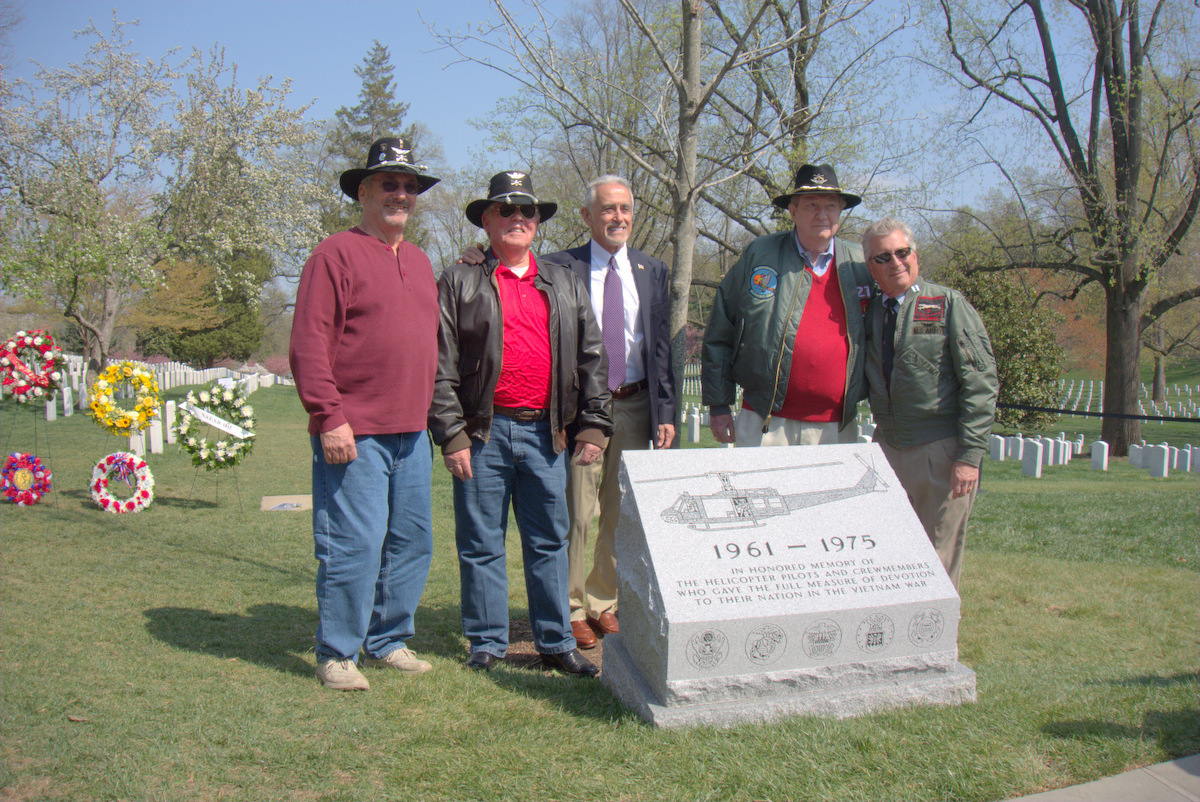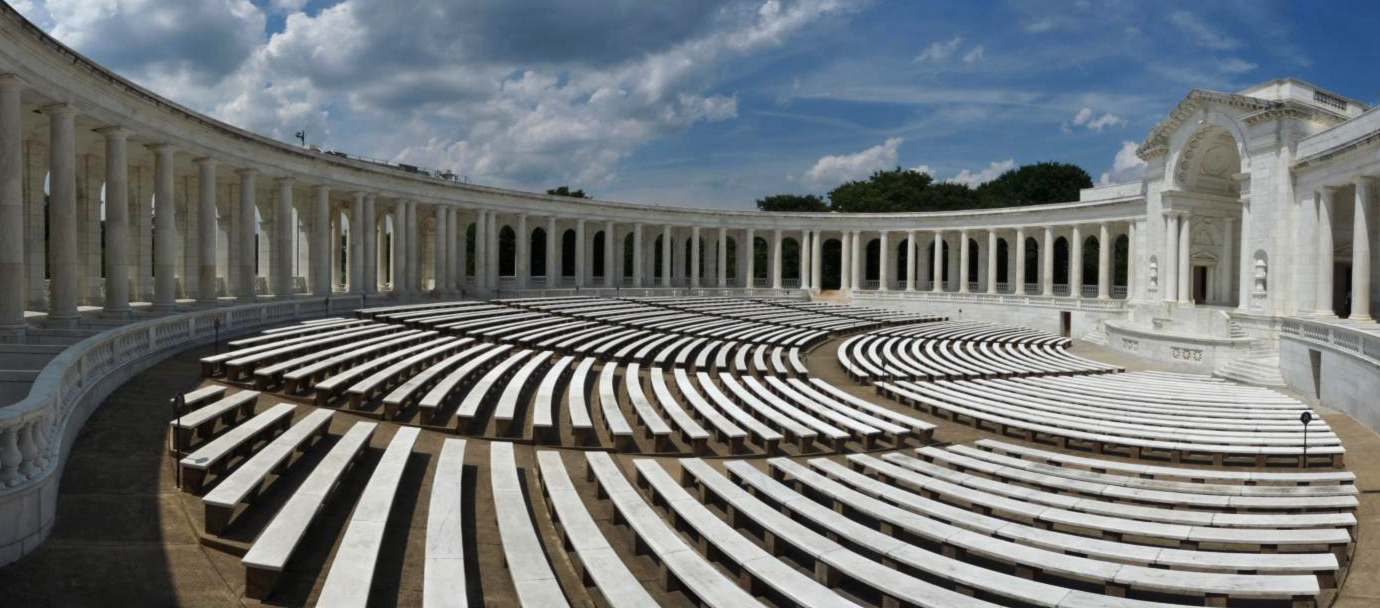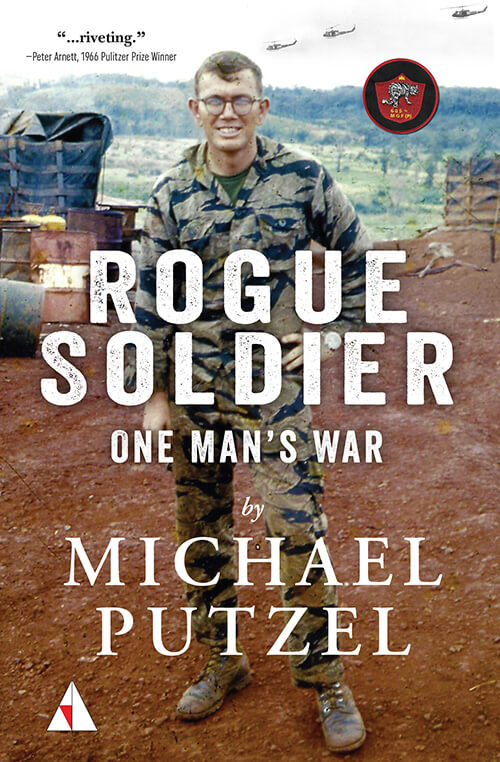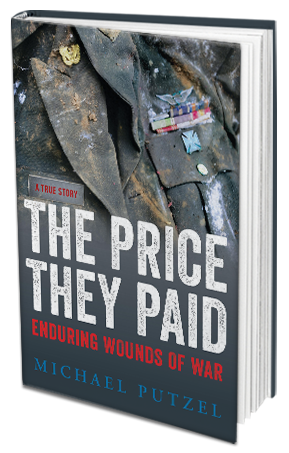Blog
A New Monument to the Pilots and Crews Lost in the Helicopter War
Posted by Michael Putzel • April 18, 2018
They gathered in the vast amphitheater at the top of Arlington National Cemetery to pay tribute to their fellow flyers, children, brothers, fathers, grandfathers and long-ago friends. Nearly 4,000 people made the trip up the hill on April 18 to dedicate a memorial to the helicopter pilots and crews of the Vietnam War, the last of whom were killed in action forty-three years before.
They were dressed in almost any style, from casual tourist to crisp dress uniforms, but those who stood out were the men wearing the olive drab flight jackets or flame-proof Nomex suits they could still get into after all these years. Many wore the black Stetson hats of the elite air cavalry units that took to the sky as their forebears had ridden fast horses to find the enemy, engage him and tie him down long enough for reinforcements to arrive.

Seeing that sea of people in the open amphitheater triggered the sobering realization that the huge auditorium could not possibly hold all 4,877 American pilots and crew members killed in Vietnam. Overwhelmingly young men, they died between July 15, 1962, when the first helicopter was shot down in the Central Highlands, and April 29, 1975, during the chaotic evacuation the night before South Vietnam fell to its conquerors from the North..

Dedication of the monument represented a victory for a small band of determined aviators and Gold Star families who fought the Army bureaucracy for the right to erect–at their own expense–the modest stone marker along Memorial Drive, where thousands of visitors a day pass memorials to the lost Challenger and Columbia shuttle astronauts and statues of famous leaders and military heroes on the way up to the Tomb of the Unknowns. The simple, 32-inch wide memorial carved from Vermont granite bears an engraving of a Huey helicopter, the iconic symbol of what came to be known as the Helicopter War. About 10,000 UH-1 Hueys and a couple thousand others, including Cobra gunships, scouts, twin-rotor Chinooks and Jolly Green Giants, ferried troops into battle, kept them supplied, rescued their wounded and recovered their dead. Between 8 percent and 9 percent of the those killed in Vietnam were pilots, crew chiefs, gunners and medics who flew those missions. Theirs were among the most dangerous jobs there.
Julie Kink, one of the speakers at the dedication ceremony, told the crowd that when she was a little girl, “the sound of a helicopter was the sound of sadness.” Her big brother David was killed when his helicopter crashed barely a month after he arrived in Vietnam. He was 19. She was 8. Whenever a helicopter flew over, Ms. Kink recalled, “My mother would put her hand over her heart and lower her head. Without a word, I knew she was grieving for the son she lost to the skies over Vietnam.”
“I know now what that sound meant to the men who were fighting the war – it was the sound of hope,” Ms. Kink continued. “It meant someone was coming to push back the bad guys, to bring supplies and ammo, to rescue their wounded and eventually to carry them out of hell.”
She added she might never fully appreciate “those of you who were crazy enough to fly around in those wobbly machines–but thank you.”
Minutes later, as the crowd collected on a knoll overlooking the new monument, a flight of four aging Hueys, now retired from military service, flew above the treetops and over the stone with their image emblazoned on it. The distinctive whop, whop, whop of the Hueys’ rotor blades raised all eyes to the sky, as quite a few of the veteran aviators snapped a crisp salute.






